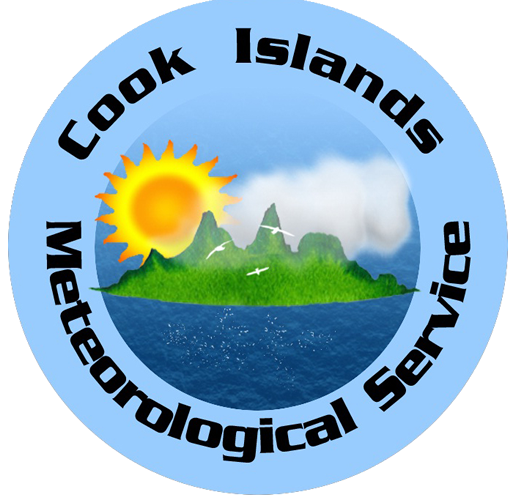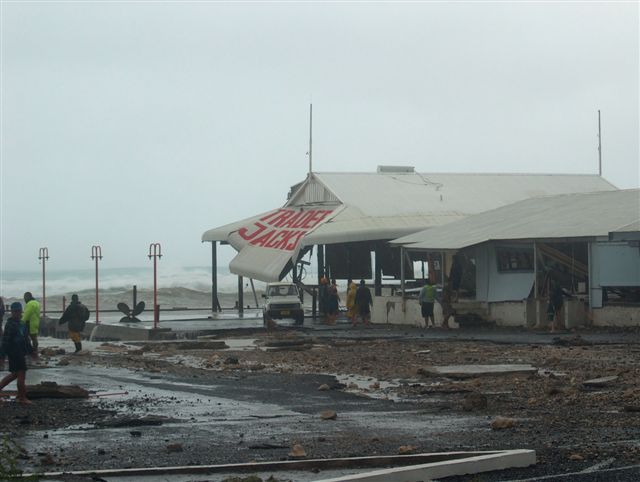

The Cook Islands Met Office has DETAILED REPORTS FOR ALL OF THE ISLANDS
Click here for details
WATER SPORTS enthusiasts can get specialist reports about Aitutaki. Click here(this is not an ad)
I'm tempted to say anytime...but here's a quick overview.
As a rule of thumb, you can expect the longest sunny days from October to
March, but it can get a bit humid too as heavy showers are common particularly
in the afternoon. It also borders the cyclone season, so there's a small risk of more
dramatic weather (see bottom of this page for more information on cyclones). June, July and August are cooler months but temperatures are typically still in
the mid 20s celcius (upper 70s F) but it can feel chilly at night (but never
cold). Aitutaki is 3 or 4 degrees celcius warmer than Rarotonga each month
but has similar weather patterns
In the Northern Cooks Islands, temperatures are fairly constant throughout the year. Day and night time temperatures are usually in the low to mid-thirties celcius. Mangaia in the south is the coolest island. Penrhyn and Rakahanga in the North are the hottest places as they're closer to the equator (at least 5-7 degrees celsius warmer than Rarotonga)
The wet season begins in late November and lasts until April or May, and sometimes longer in the Southern Cooks (that includes Rarotonga and Aitutaki). This is also the low season for tourism. November to March is the cyclone (hurricane) season too. It can become hot and humid (29℃/84 ℉ by day) with bright sunny mornings and late afternoon downpours around Rarotonga. As the heat accumulates over the Pacific Ocean during this season, depressions can form bringing with them thunderstorms, strong winds and the occasional tropical cyclone. According to the national newspaper, Cook Islands News: "on Rarotonga we judge how hot the weather is by checking how much the tar seal on the roads has melted!"
July is "midwinter" and the average daily temperature is 25℃/77℉. This drops to around 19℃s/66 ℉ at night. And on really cold nights, it can fall as low as 14 ℃/57 ℉! The lowest winter temperature on record was in 1965 when the thermometer fell to just over 9℃ (48℉)!!!
CURRENT AND FORECAST
CURRENT AND FORECAST


The Cook Islands Met Office has DETAILED REPORTS FOR ALL OF THE ISLANDS
Click here for details
WATER SPORTS enthusiasts can get specialist reports about Aitutaki. Click here(this is not an ad)

The after effects of one of 5 cyclones in 5 weeks in 2006. Such events are rare
Cyclones (elsewhere called hurricanes or typhoons) are a fact of life in this part of the world and are categorised as 1 to 5 where 5 is the most intense .
At worst cyclones can bring winds around 200kph (124mph), very stormy seas, flooding and extensive damage. But the extreme ones are relatively rare. A Canadian professor who studied their history says that between 1820 and 2006 they averaged less than one a season. And 29% per cent occur in February. The most recent serious one was Cyclone Pat which hit Aitutaki in 2010. And the worst cyclone season in living memory was in 2005 when there were five cyclones in five weeks, although the fifth degraded to a tropical storm when it reached the Islands. According to the Director of the local met office, the average is 1.1 a year
If you still can't decide when to visit, take a look at all the special events which could make your trip even more special
2025 EVENTS CALENDAR 2026 events preview